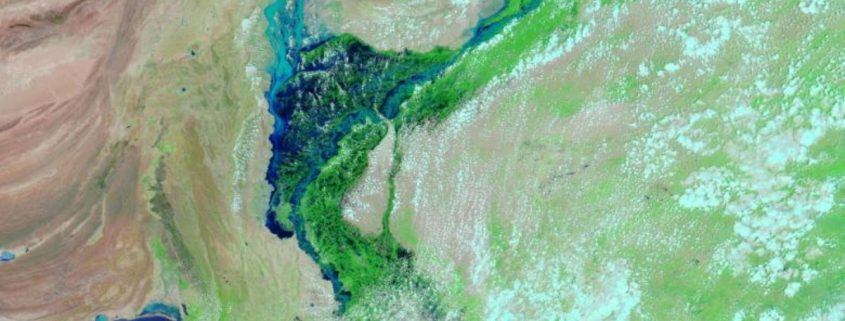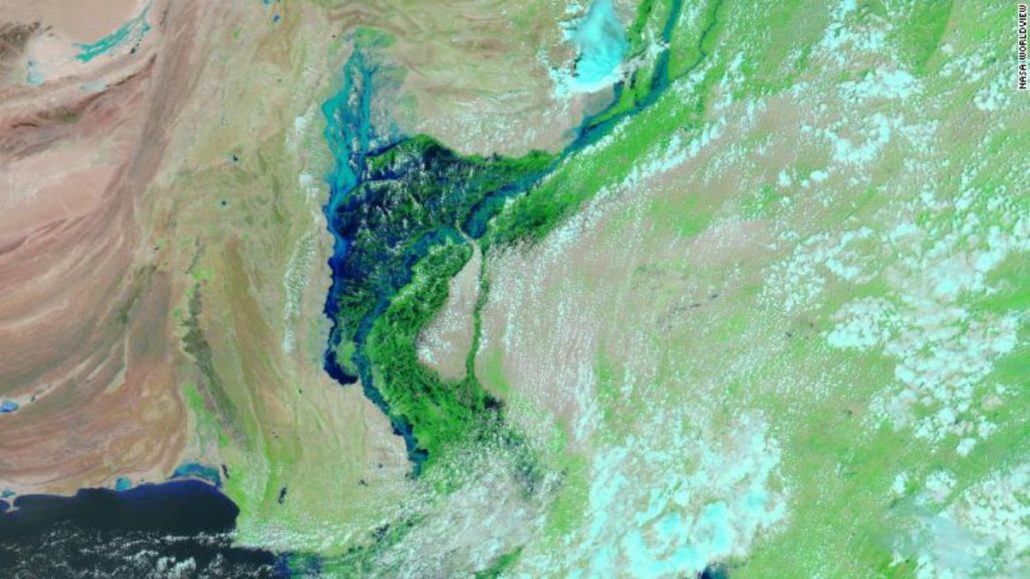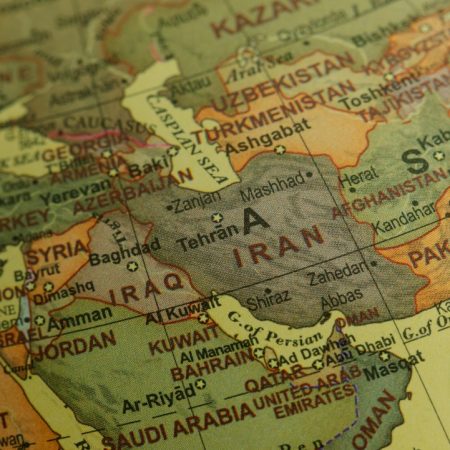Flooding and Destruction Continues in Pakistan
By Mahvish Akhtar
Flooding in Pakistan started in June because of the monsoon rains. Sixty-six districts have been officially declared as ‘calamity hit’ by the Government of Pakistan. Thirty-one of these districts are in Balochistan, 23 in Sindh, nine in Khyber Pakhtunkhwa (KPK), and three in Punjab. The condition is getting worse every day because more districts have been affected. They just haven’t reached calamity level yet. As rains continue to fall and judging by the lack of preparation, experts are afraid they might be added to the number above.
The National Disaster Management Authority (NDMA) reported that 33 million people had been impacted by this disaster. Pakistan has experienced 375.4 mm of rainfall, 2.87 times higher than the national 30-year average of 130.8 mm.
According to the NDMA, Over 218,000 houses have been destroyed and 452,000 damaged since 14th June 2022. More than 793,900 livestock, a critical source of sustenance and livelihood for many families, have died. Sixty-three percent loss of the livestock happened in Balochistan and 25 percent in Punjab. Around 2 million acres of crops and orchards have also been impacted, including at least 304,000 acres in Balochistan, 178,000 acres in Punjab, and 1.54 million acres in Sindh.
Damage to houses and buildings has been extreme as well. At least 17,566 schools have been damaged or destroyed. In Sindh, 15,842 schools were destroyed, 544 in Balochistan, and 1,180 in Punjab. All schools are closed, even the ones with buildings intact, which are being used as shelters for displaced people. The children and young adults do not have any way of continuing their education for the foreseeable future, which means the staff of those schools is also out of jobs. These aren’t the only people who cannot work in the flooded areas. Everyone is stuck in most places.
The Chairman of Pakistan Red Crescent, Abrar ul Haq said, “The situation is worsening by the day. These torrential floods have severely restricted transportation and mobility. The threat of COVID-19 and damage to vehicles, infrastructure, and connectivity are further making our emergency relief works almost impossible. Most of those affected are also immobile or marooned, making us hard to reach them. We fear the worst is yet to come as these kinds of waters could mean the risk of water-borne diseases are looming over the heads of our people.”
The Red Cross Federation has released around 500,000 USD from its emergency funds to assist close to 31,000 affected people immediately. Partner countries include; the Turkish Red Crescent, German Red Cross, and Norwegian Red Cross.
The death toll reaches up to 119 in one day. This weather and the damages related to the weather, whether directly or in an adjacent situation, have affected almost 15% of the population. Foreign Minister Bilawal Bhutto urged the international community to come forward and help since the problem is likely to worsen because the rain is predicted to continue, and the country is already in an economic crisis.
“Going forward, I would expect not only the International Monetary Fund, but the international community and international agencies to truly grasp the level of devastation,” he said.
Pakistan’s Climate Minister Sherry Rahman tweeted, “Pakistan has never seen an unbroken cycle of monsoons like this. 8 weeks of non-stop torrents have left huge swathes of the country under water. This is no normal season, this is a deluge from all sides, impacting 33 million plus people, which is the size of a small country.”
The government has deployed the army to help with the rescue mission. Also, Federal Flood Commission (FFC) is one of the significant wings of the Ministry of Water Resources of the Pakistan Government (MWRP). FFC is mainly responsible for preparing National Flood Protection Plans and their implementation through concerned Provincial and Federal agencies in the country. This department was created after the major flood of 2010 and the damage it caused. Chief Engineering Adviser of MWRP acts as Chairman of FFC.
On Monday, Pakistan Tehreek-e-Insaf (PTI) Chairman Imran Khan held an international telethon to raise funds from within the country and overseas Pakistanis for the flood victims. The event was three hours long, and it aired live on multiple TV stations all over Pakistan. Senator Faisal Javed Khan hosted the event. Chief ministers of Punjab and Khyber-Pakhtunkhwa, Pervaiz Elahi and Mahmood Khan, former premier’s ex-assistant on social protection Sania Nishtar, prominent Pakistani celebrities, and other politicians joined Imran Khan’s the cause on the show. Khan raised Rs.5 billion in three hours. He said during the program, “The sole solution to prevent the catastrophes caused by flood is to construct dams.” How the funds are used and distributed and how transparent all transactions will be is still to be seen.
The Government of Pakistan has established a flood relief fund called the Prime Minister’s Flood Relief Fund, 2022. The Fund accepts donations/contributions both from domestic and international sources.
As of today, no number has been given to the public of how much money has been collected in this fund. No reports show where the funds are being used and how they are distributed among the Provinces. To give to this relief fund, The State Bank of Pakistan has opened the “Prime Minister’s Flood Relief Fund Account, 2022.” Funds can be wired through any international bank or use a money agency.
Other trusted options are listed below, and every website has a section for international donations which will make it easy to help in just a few steps:
Pakistan Red Crescent (PRCS)
http//:prcs.org.pk
info@prcs.org.pk
Alkhidmat Foundation Pakistan
Alkhidmat.org
info@alkhidmat.org
Shahid Afridi Foundation (SAF)
HTTP//: Shahidafridifoundation.org
info@shahidafridifoundation.org
Fast Rural Development Program (FRDP)
Frappe.org.pk
Info@frdp.org.pk





















2022
1,210 views
views
0
comments